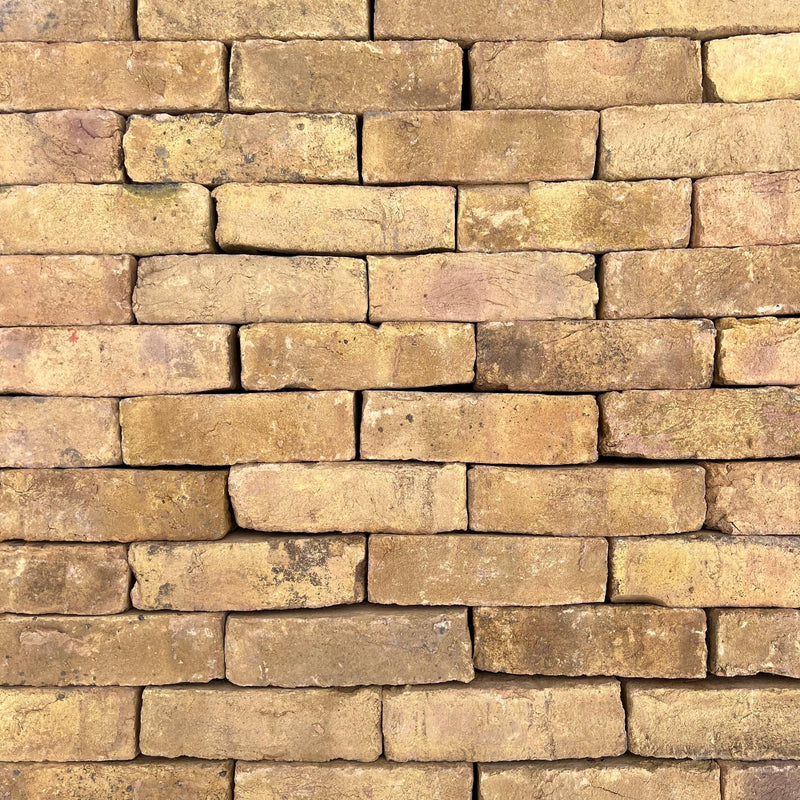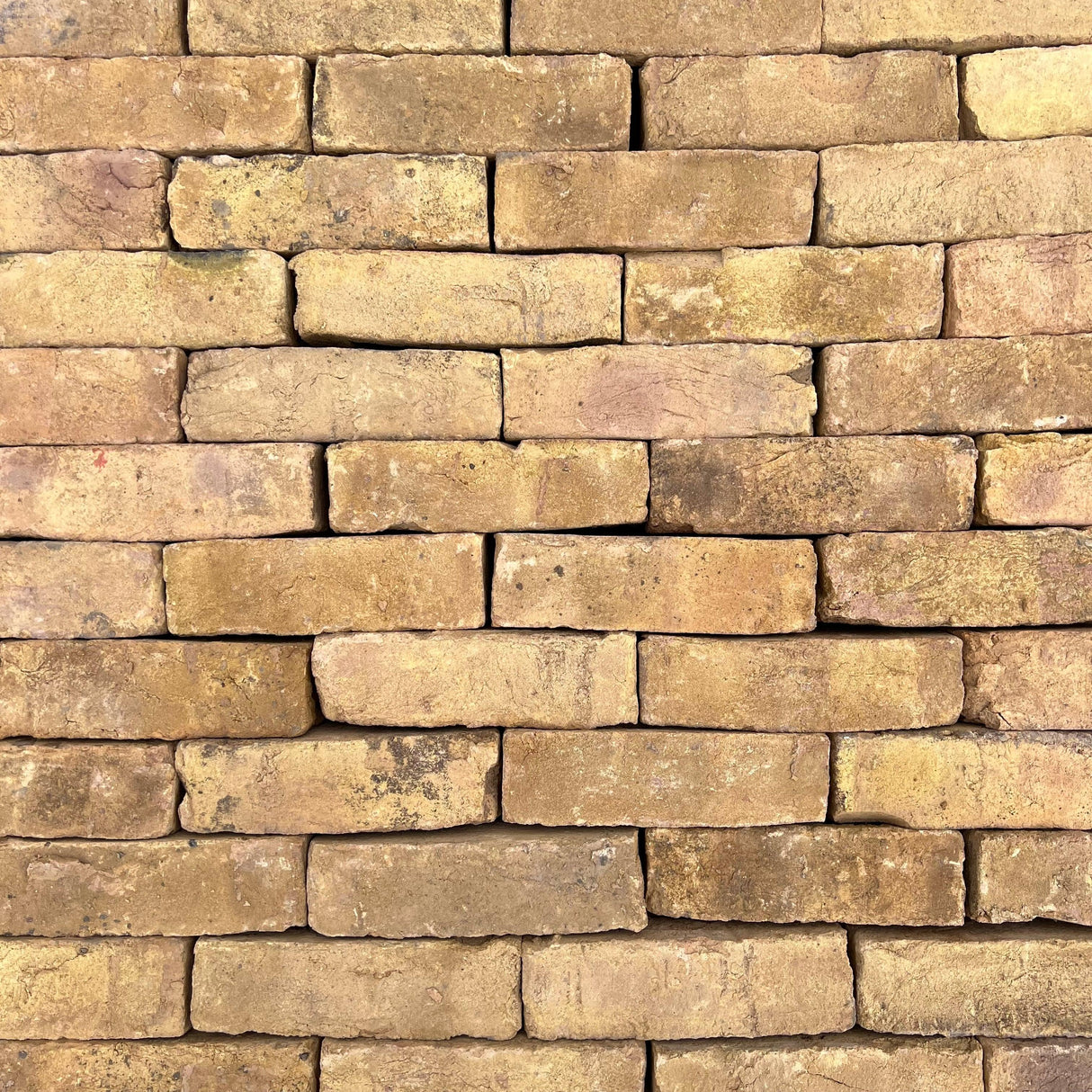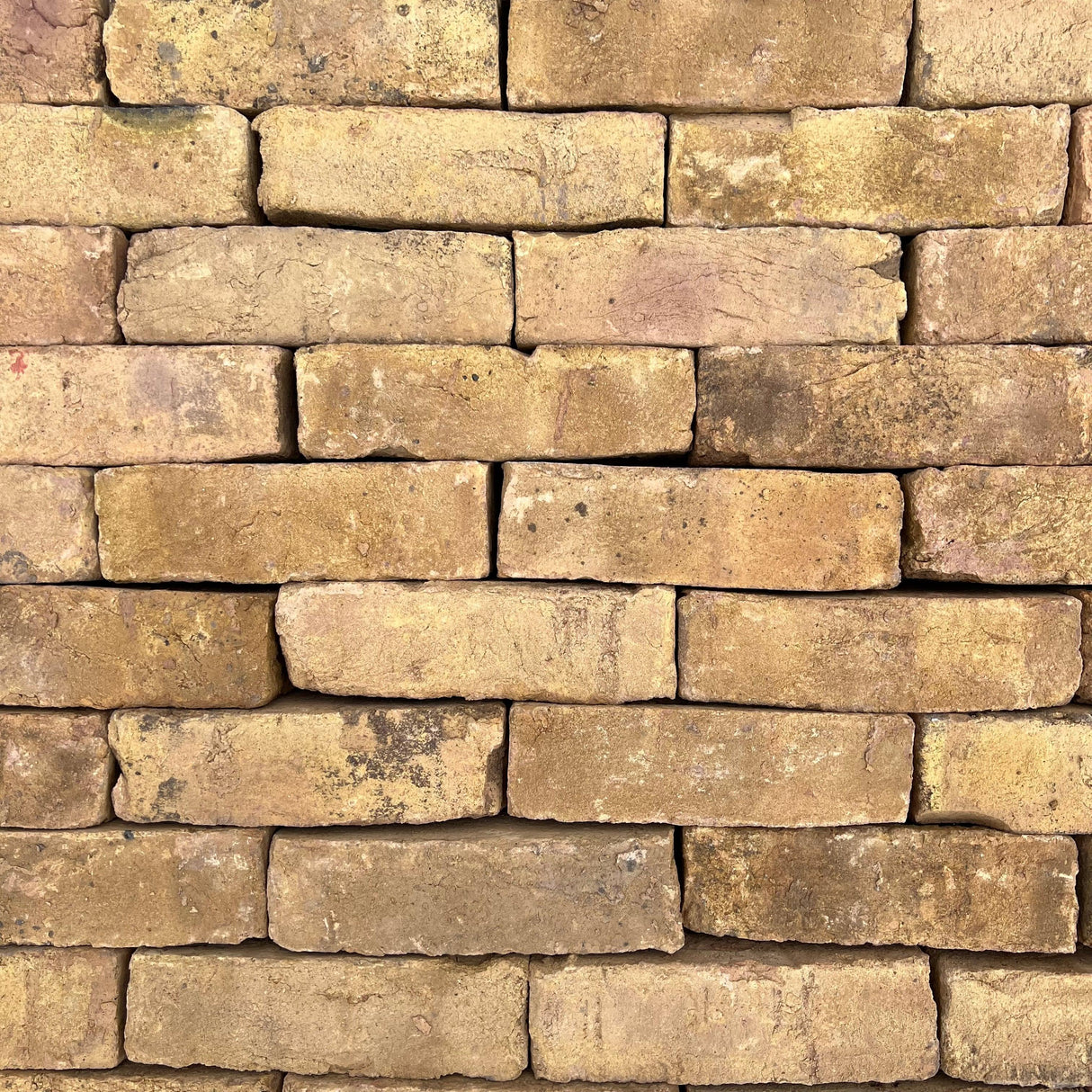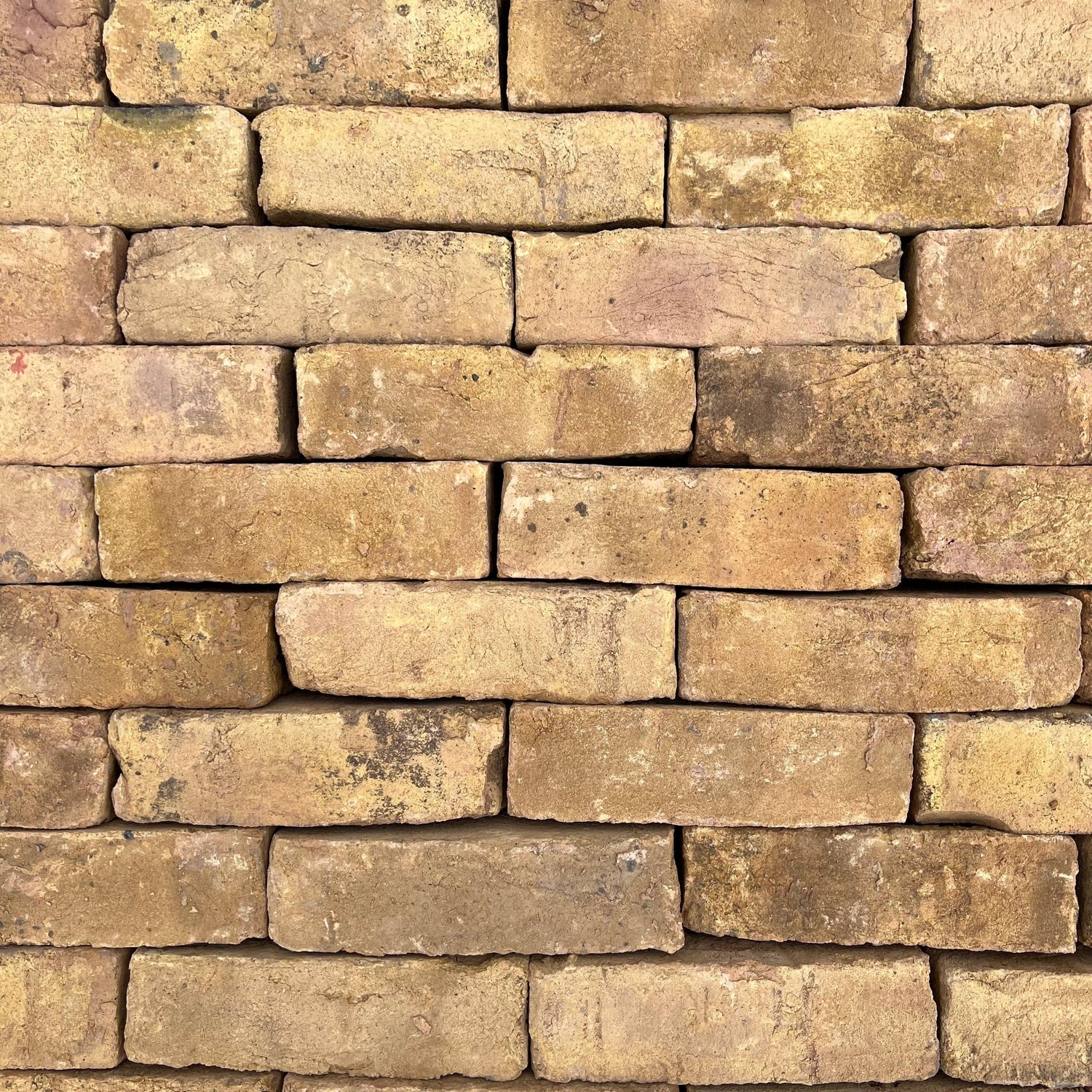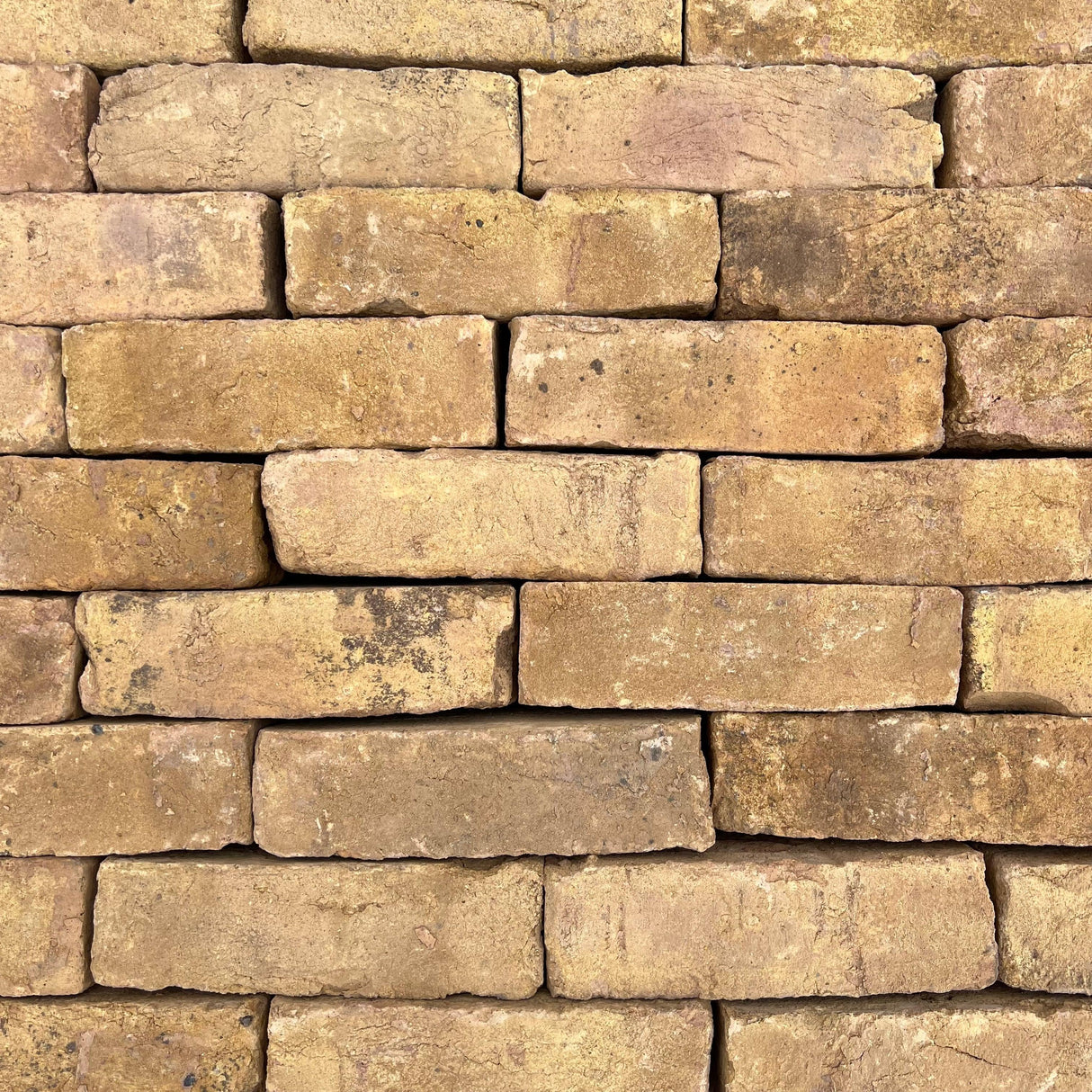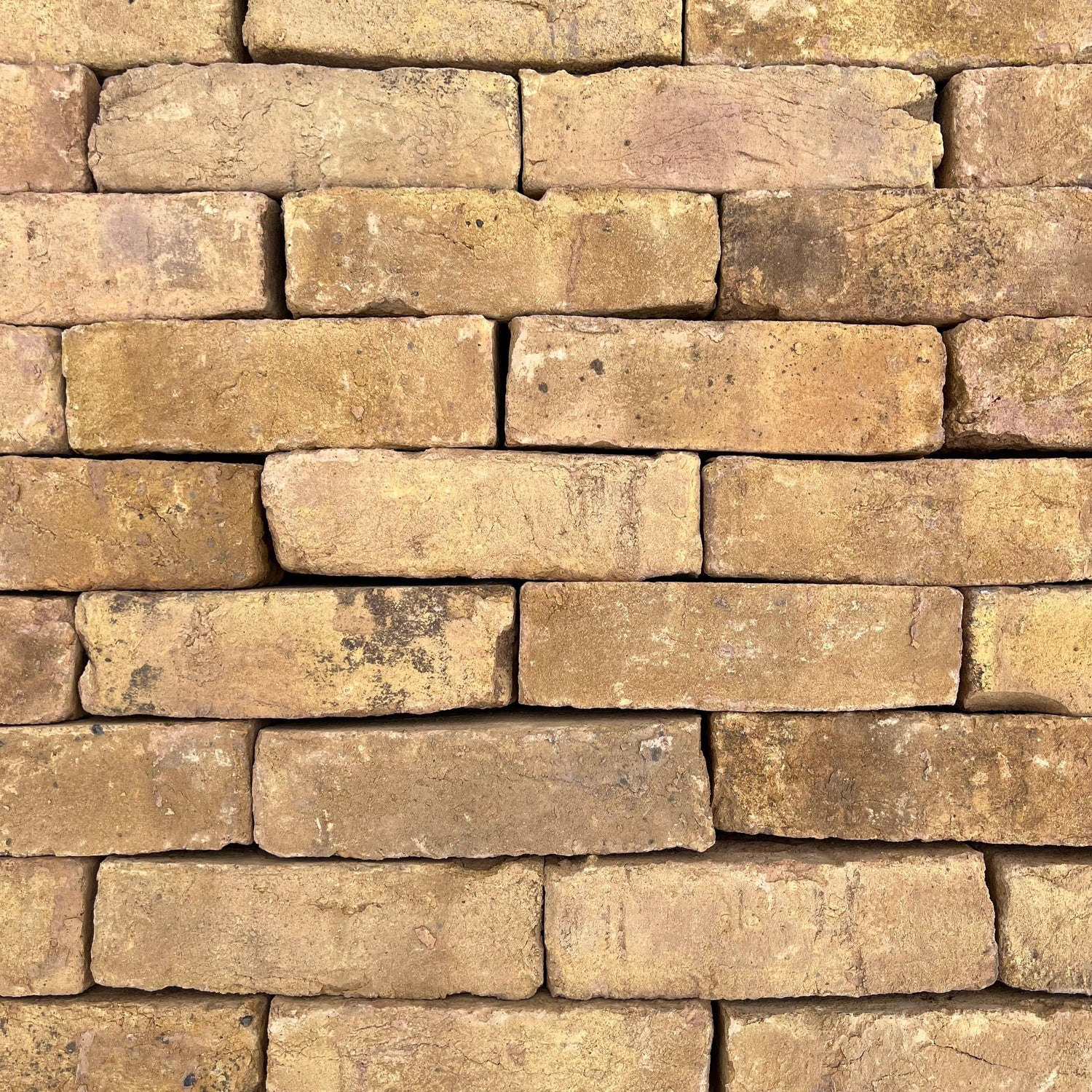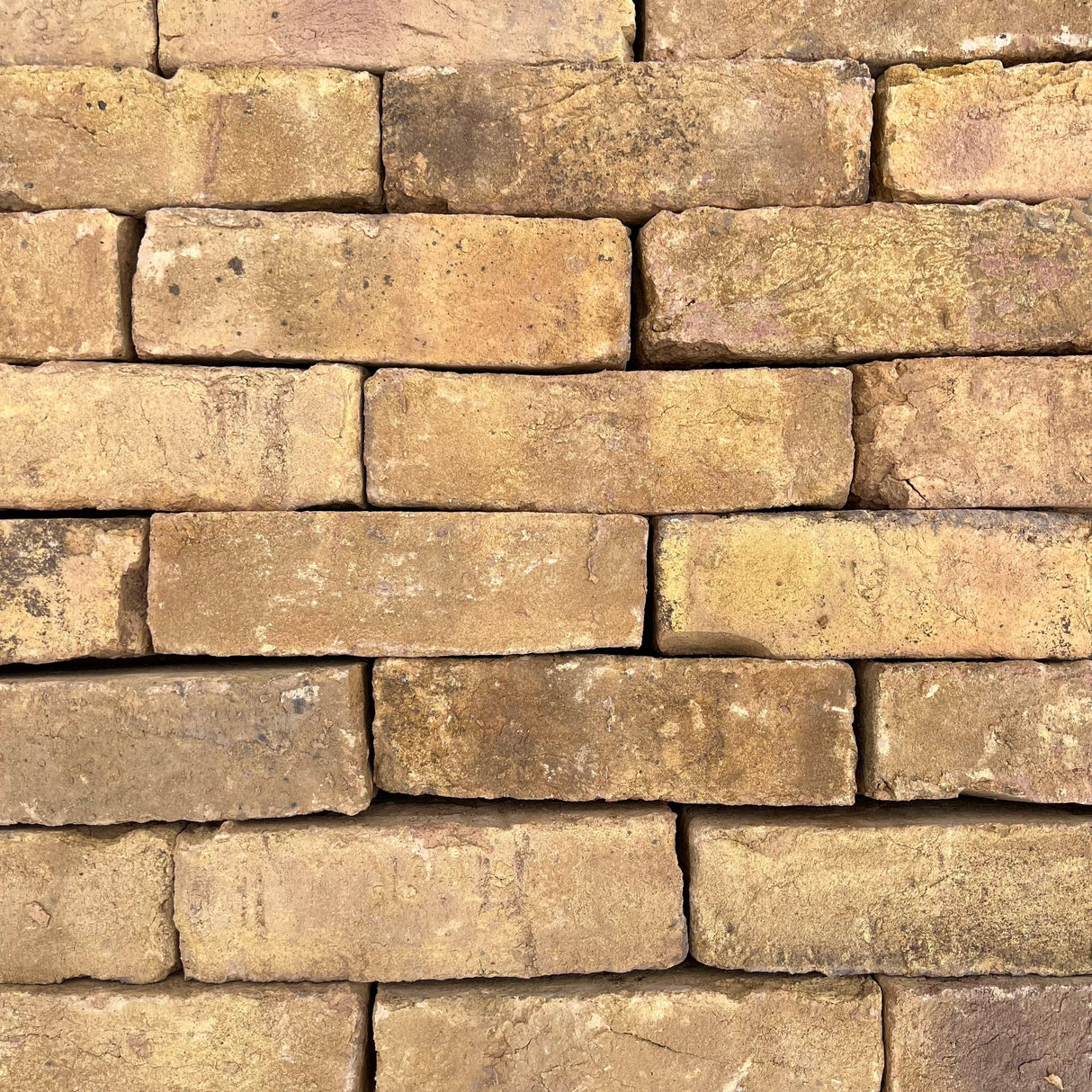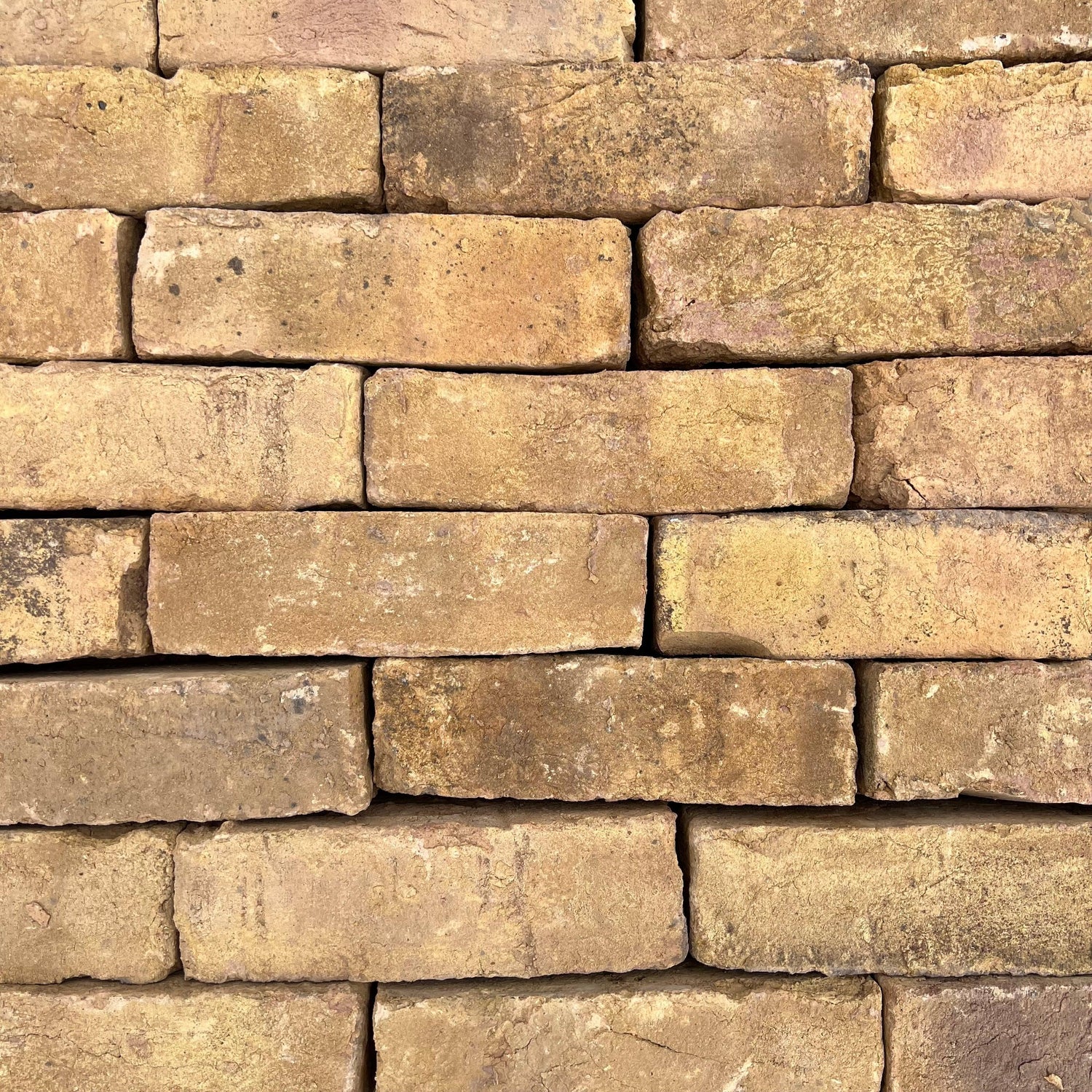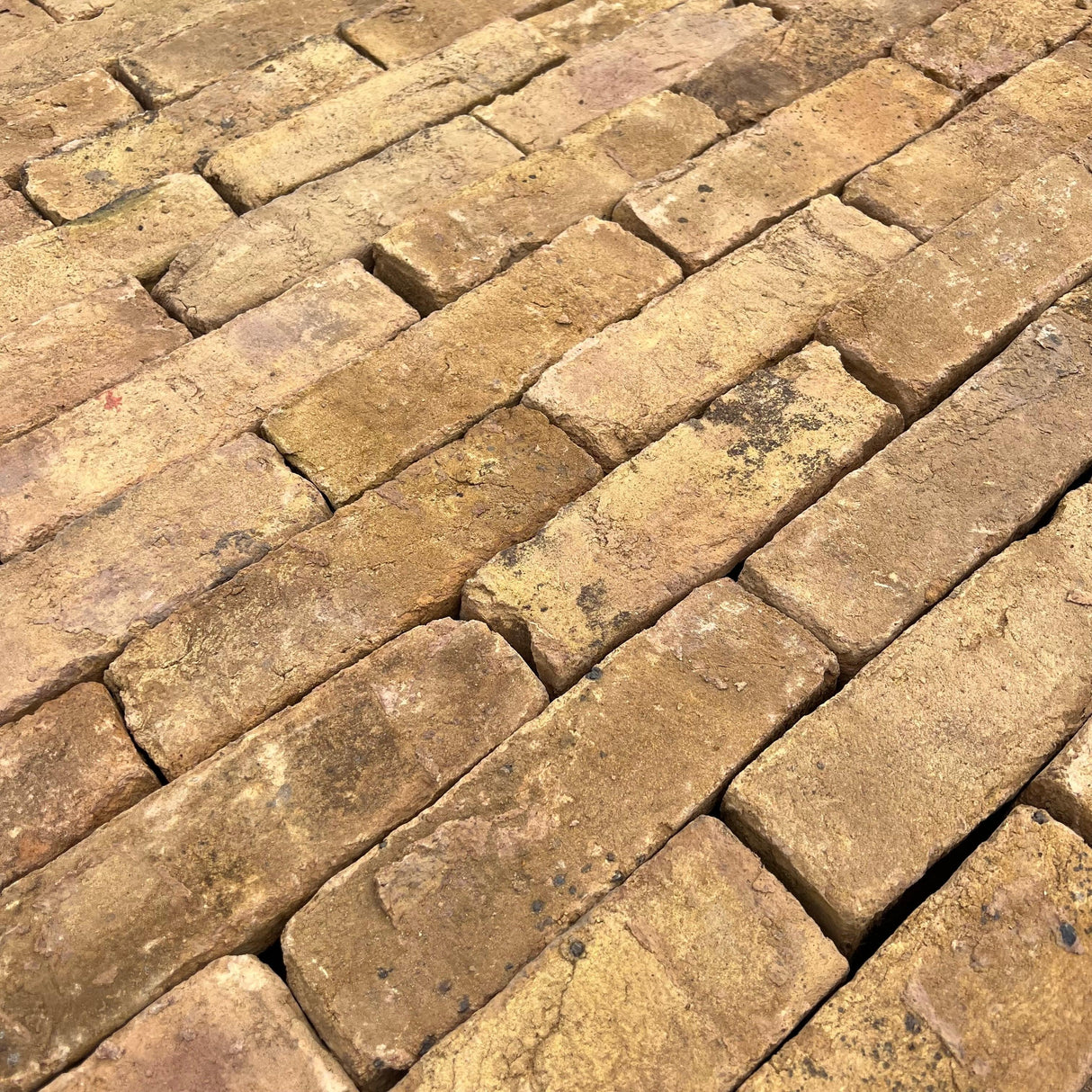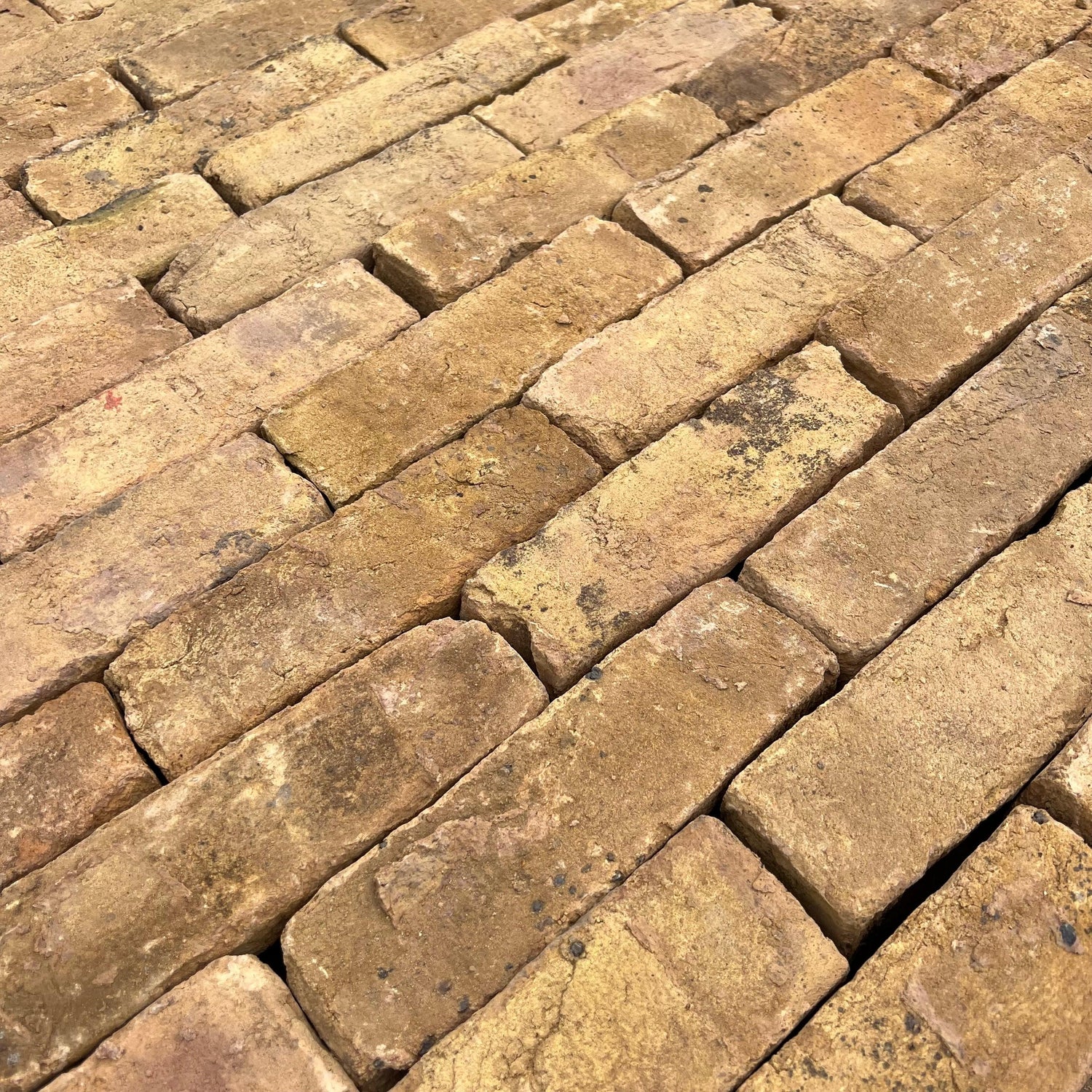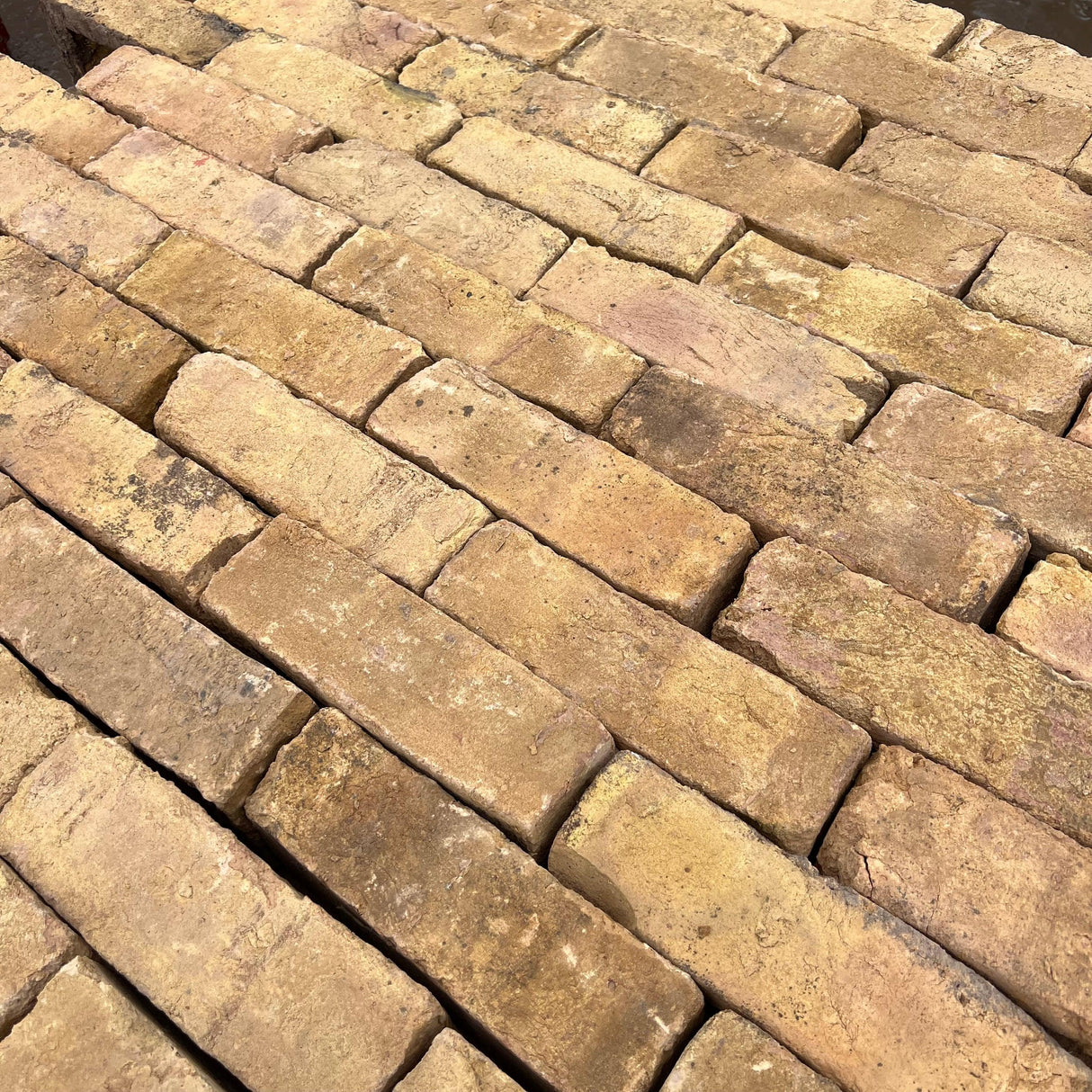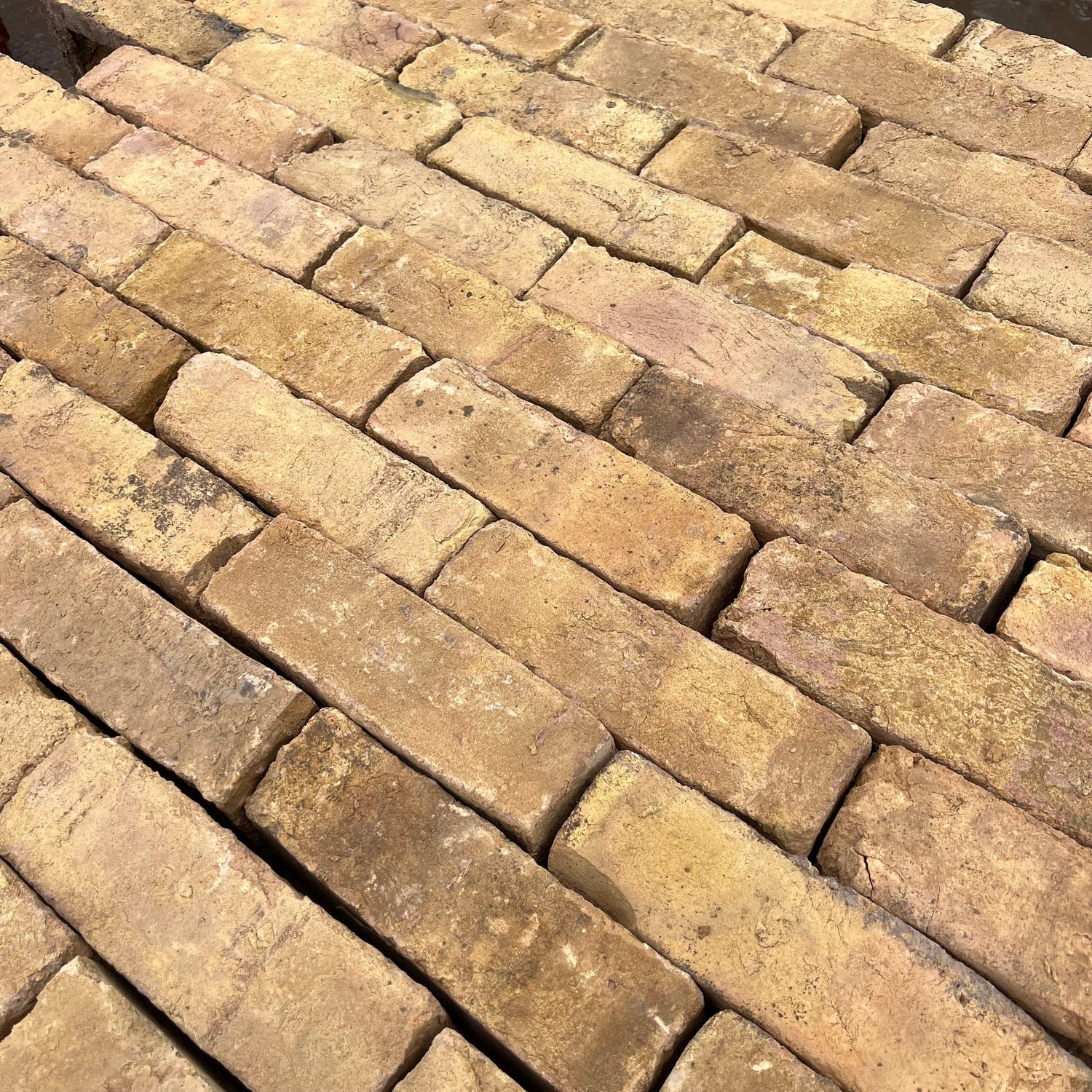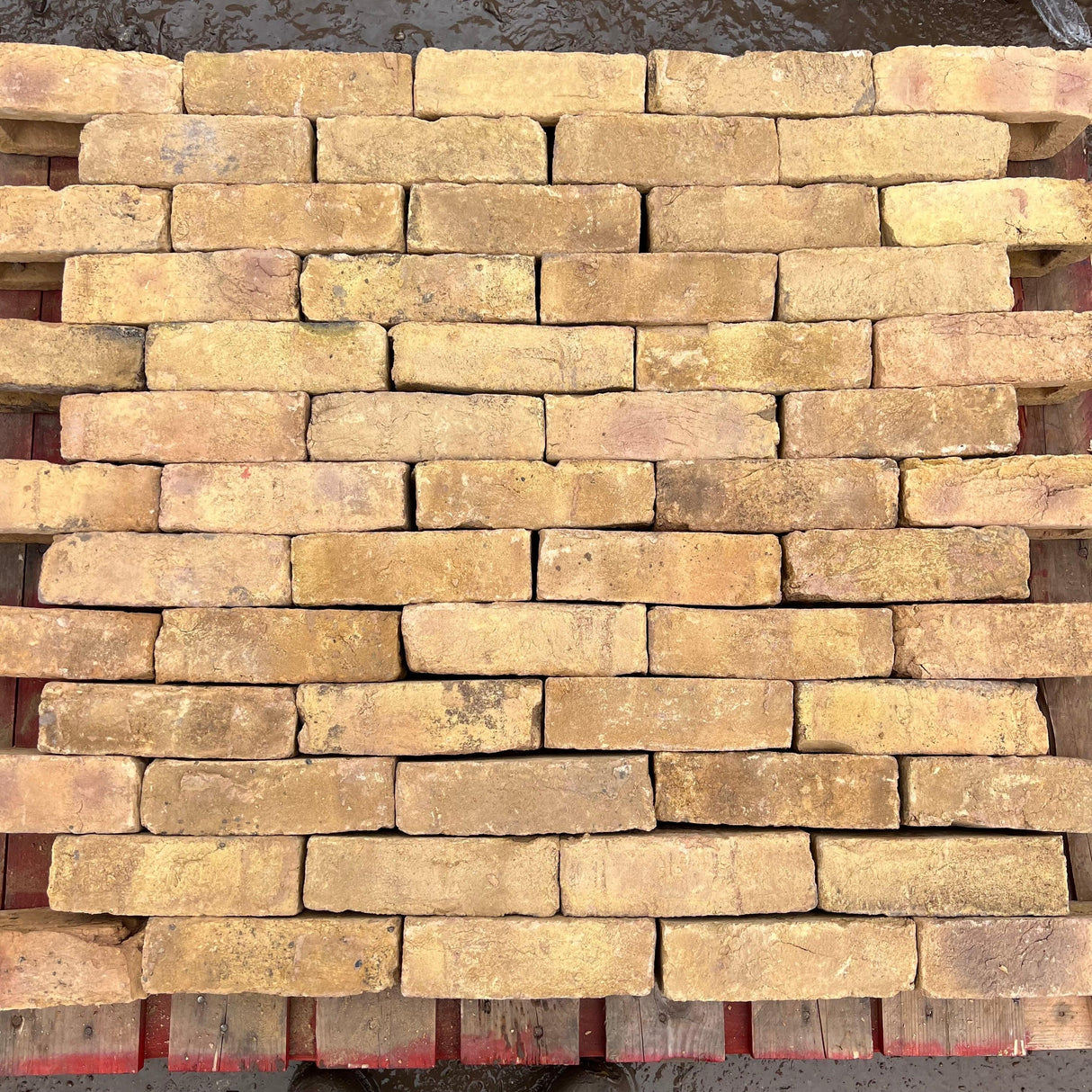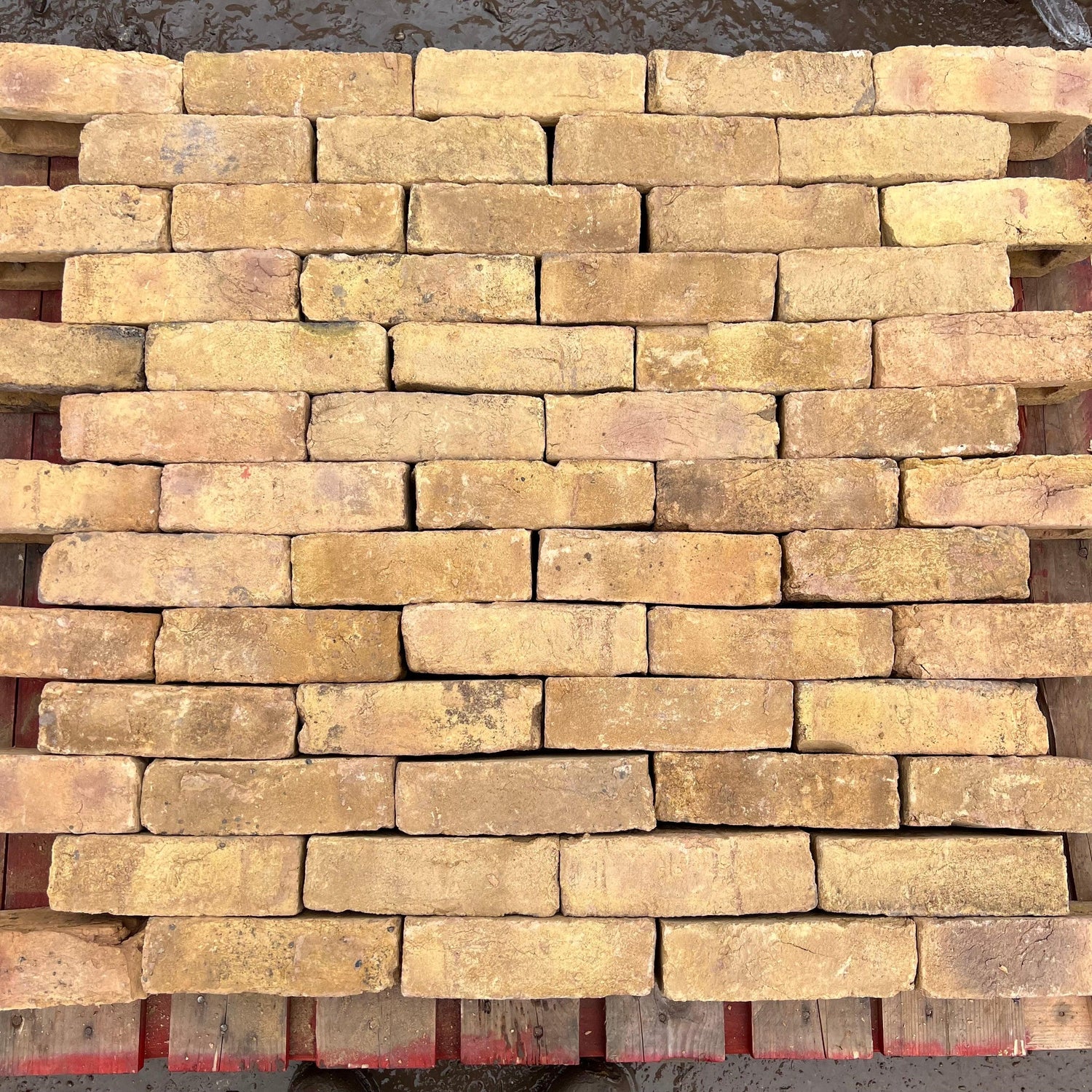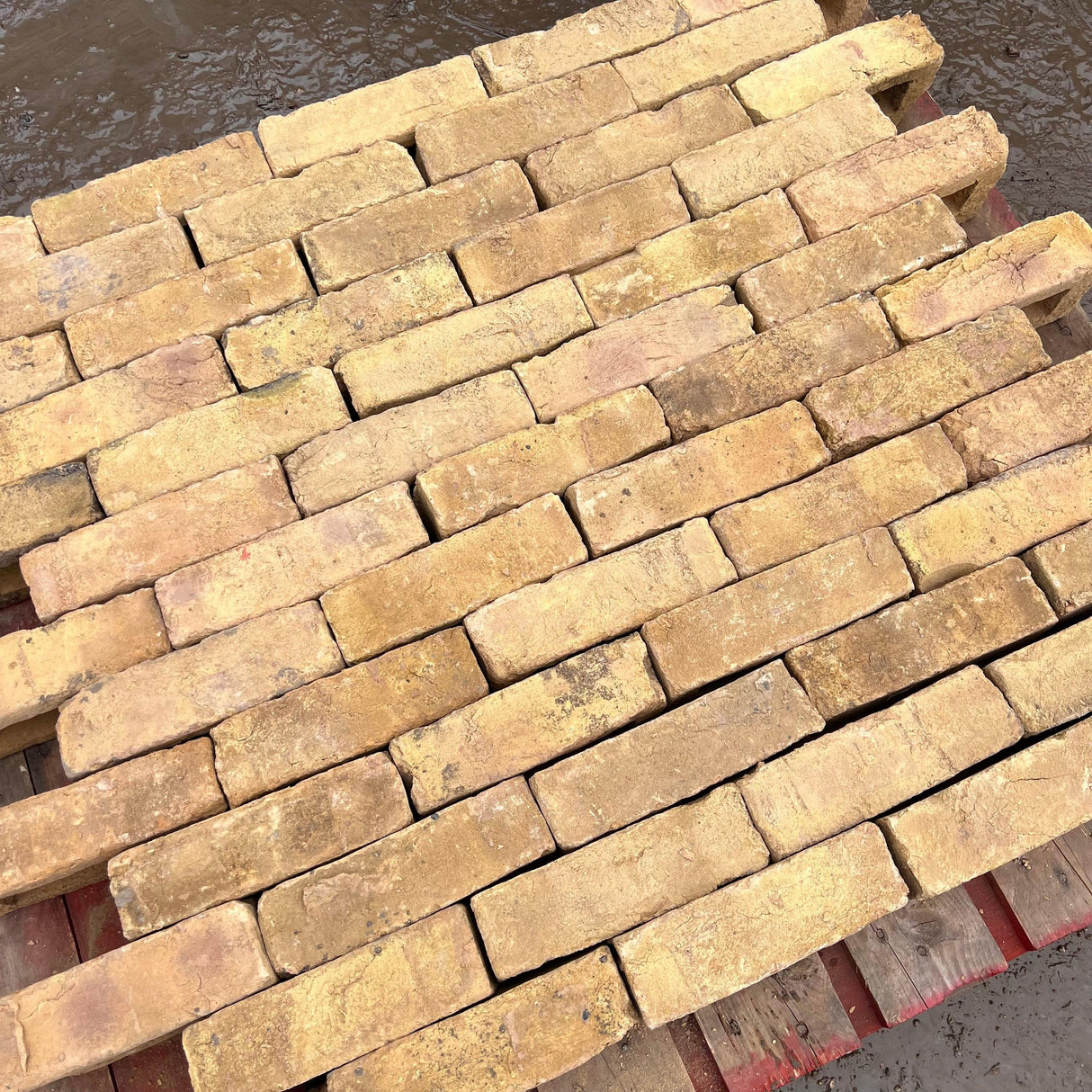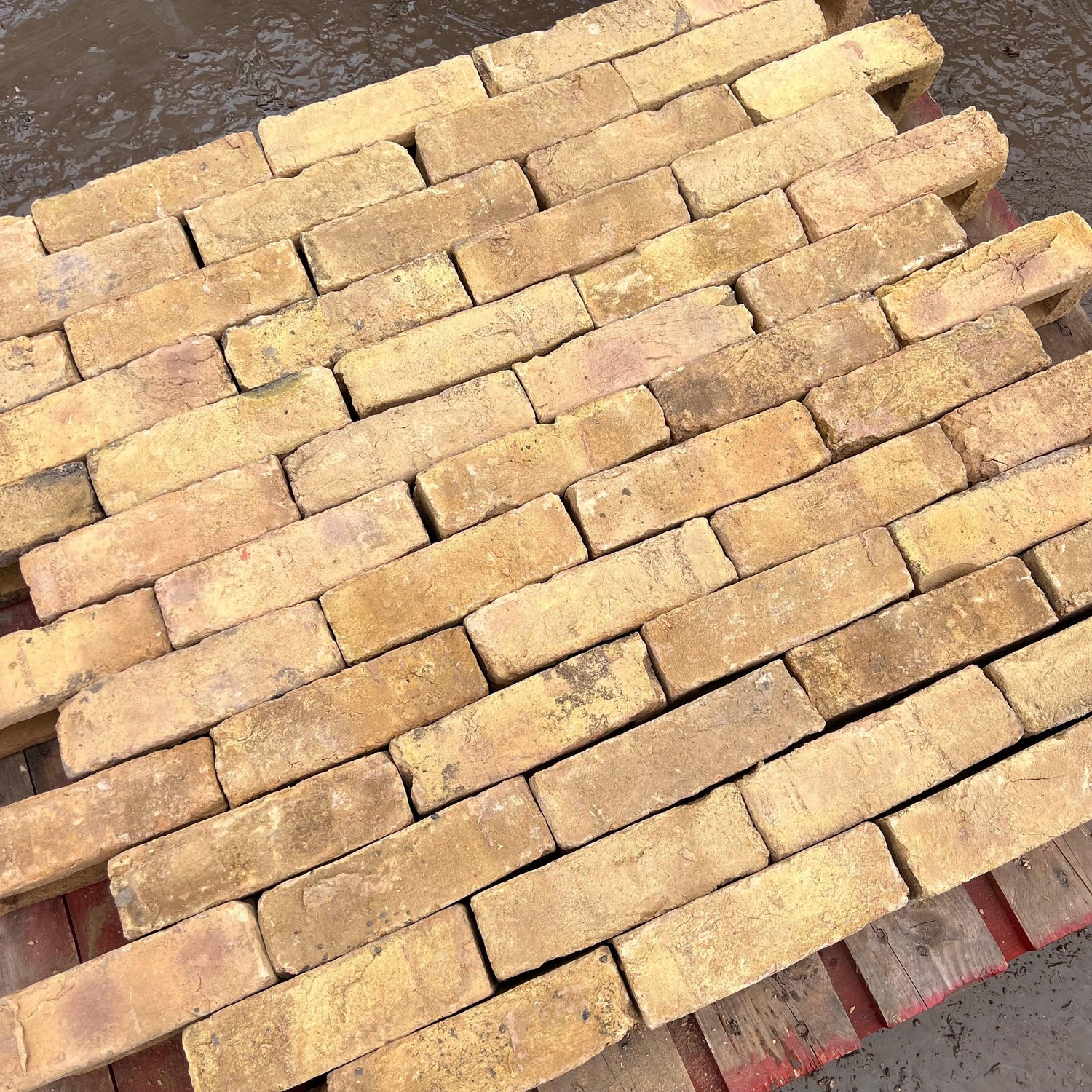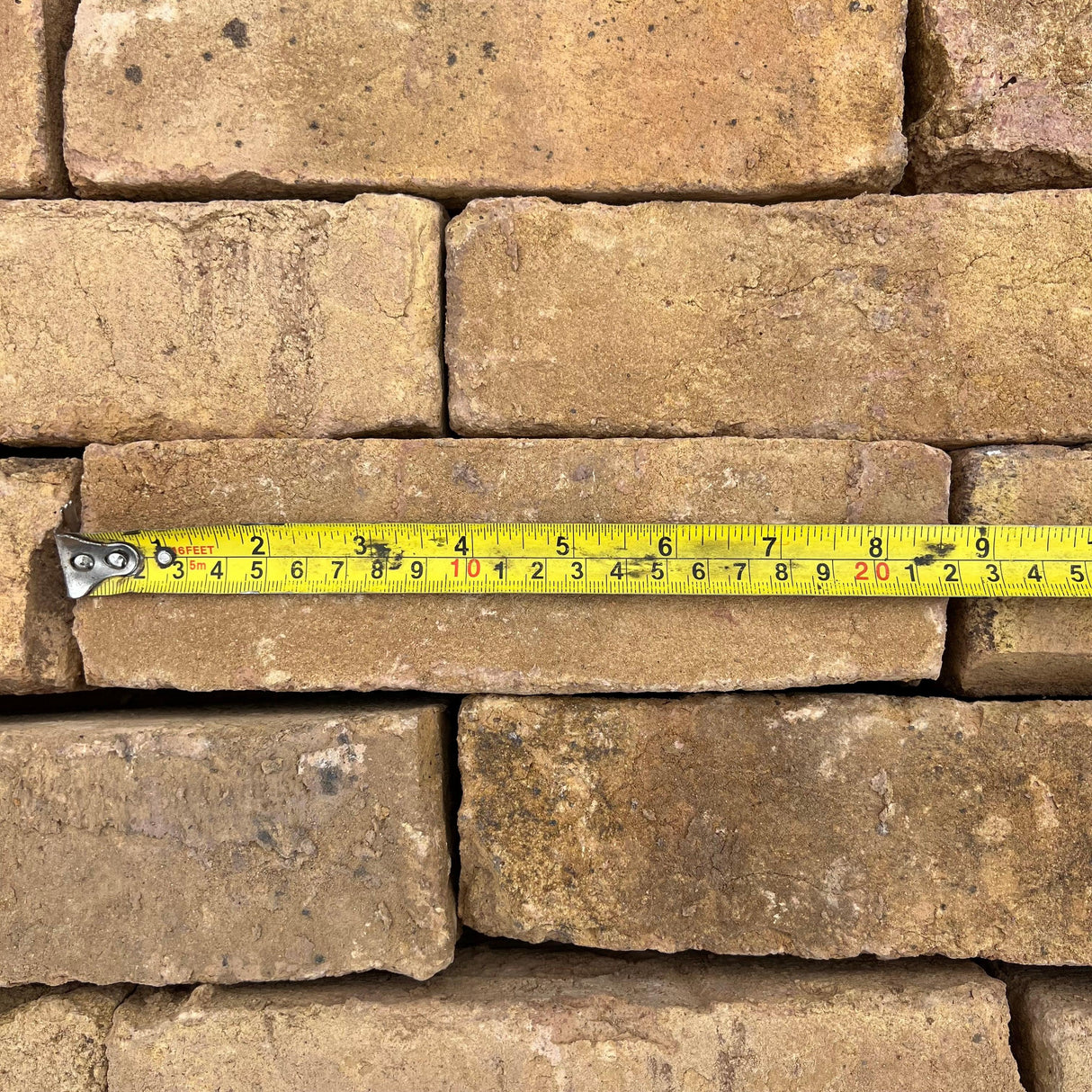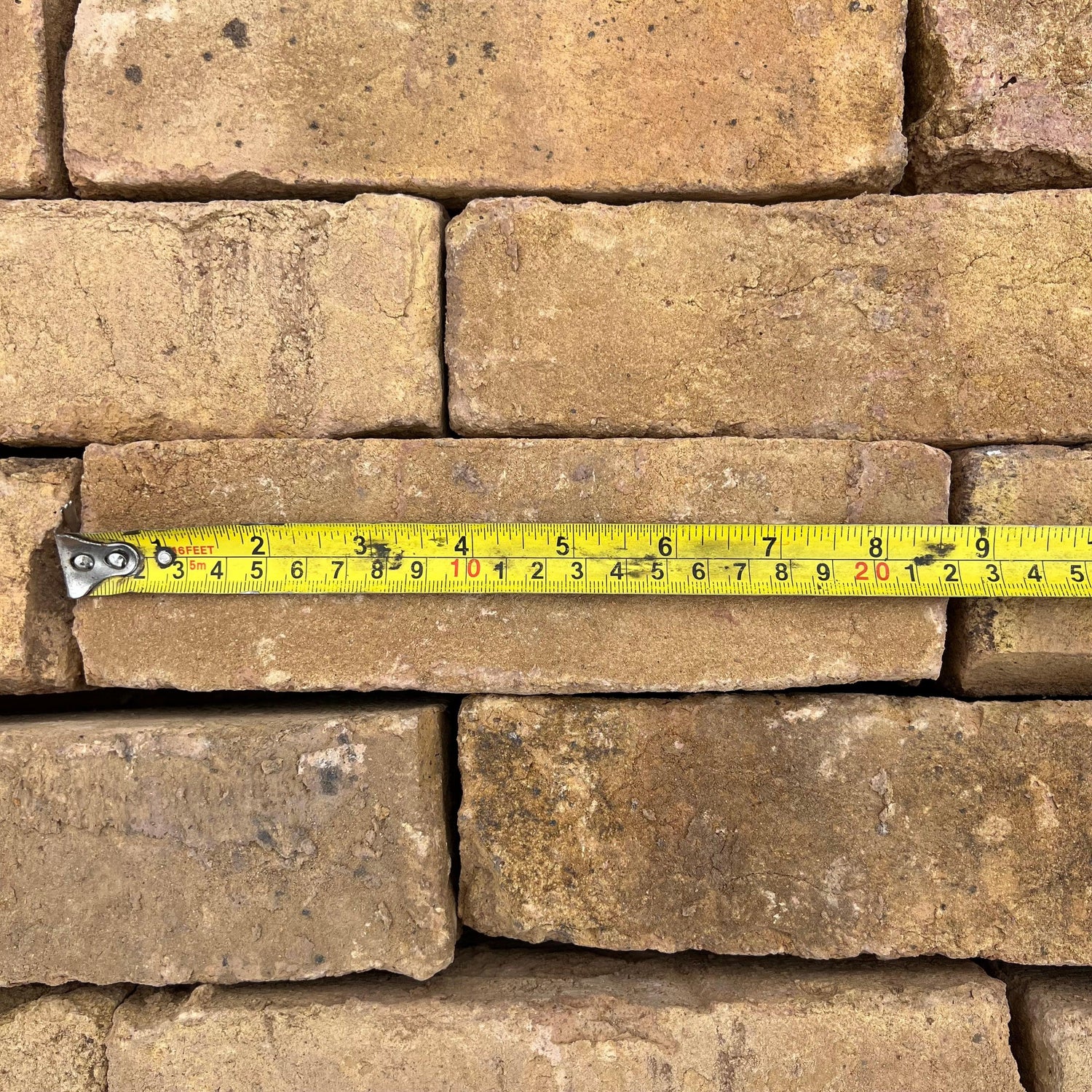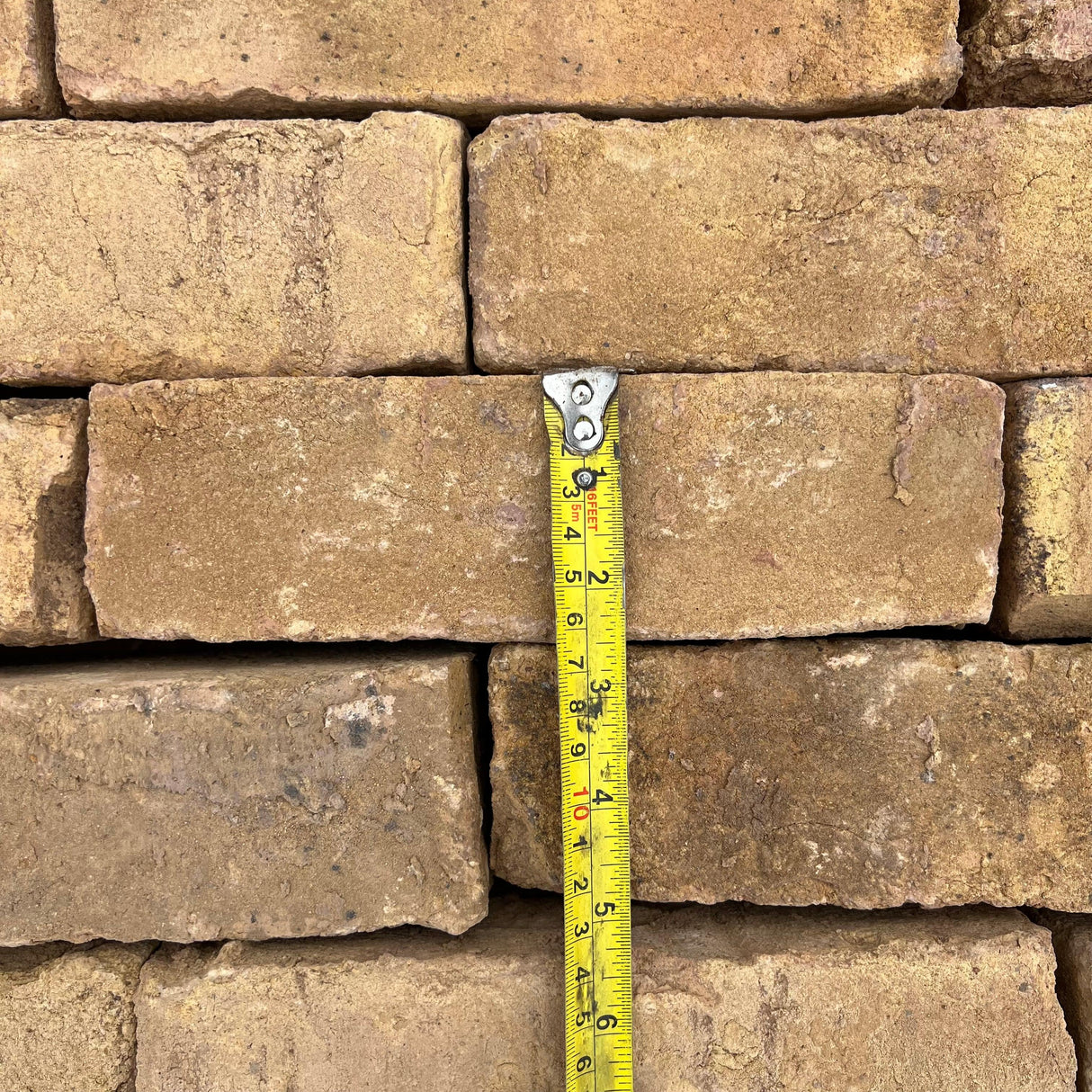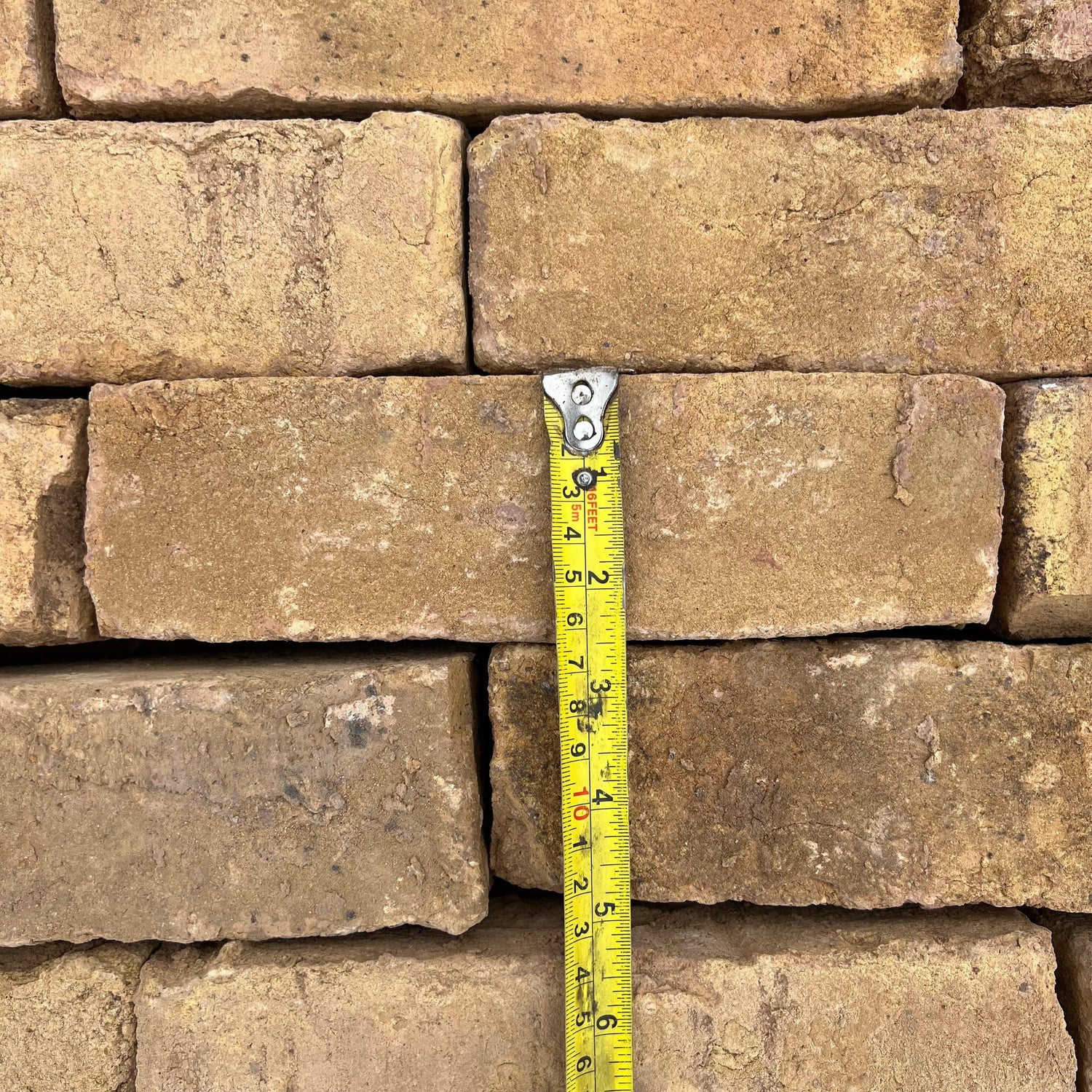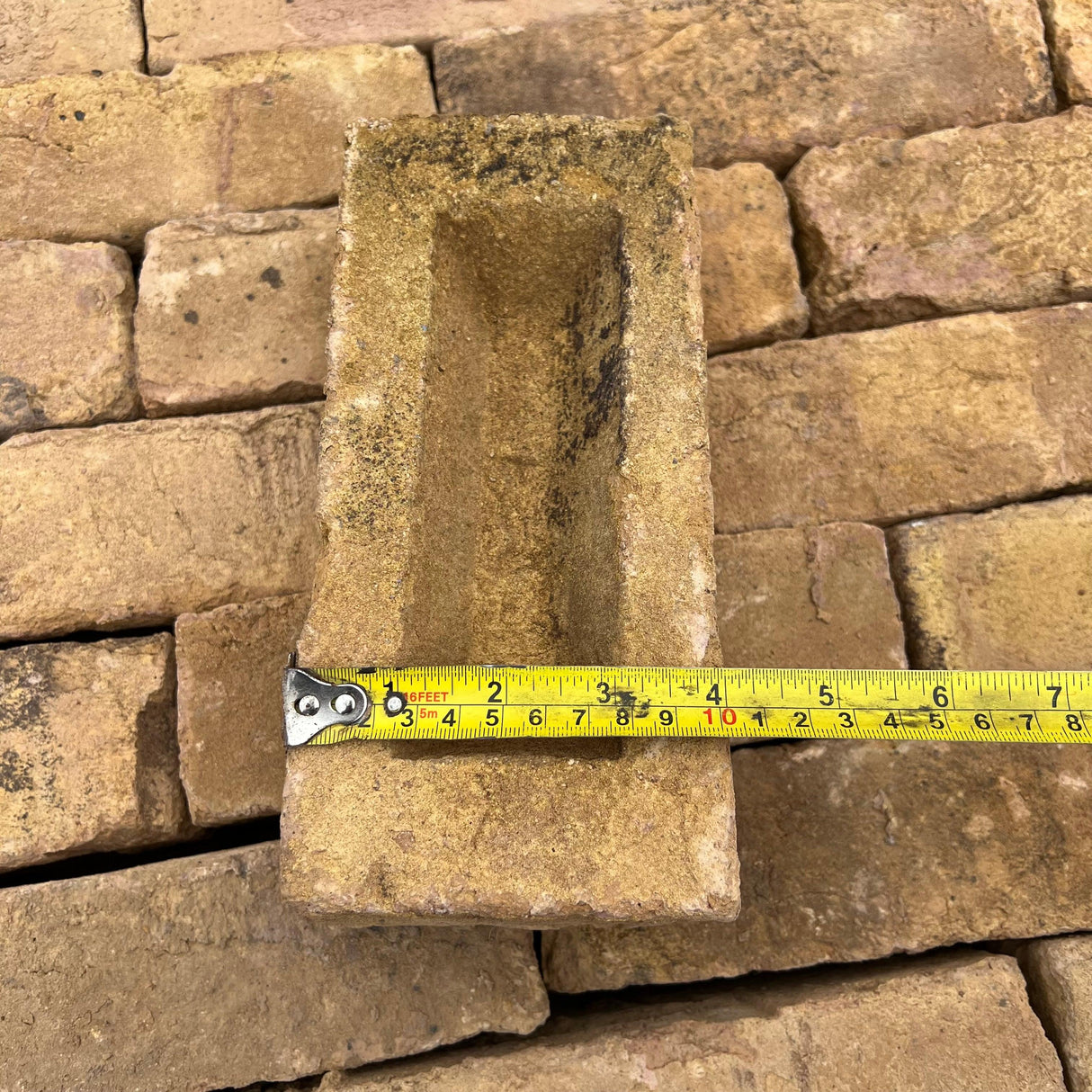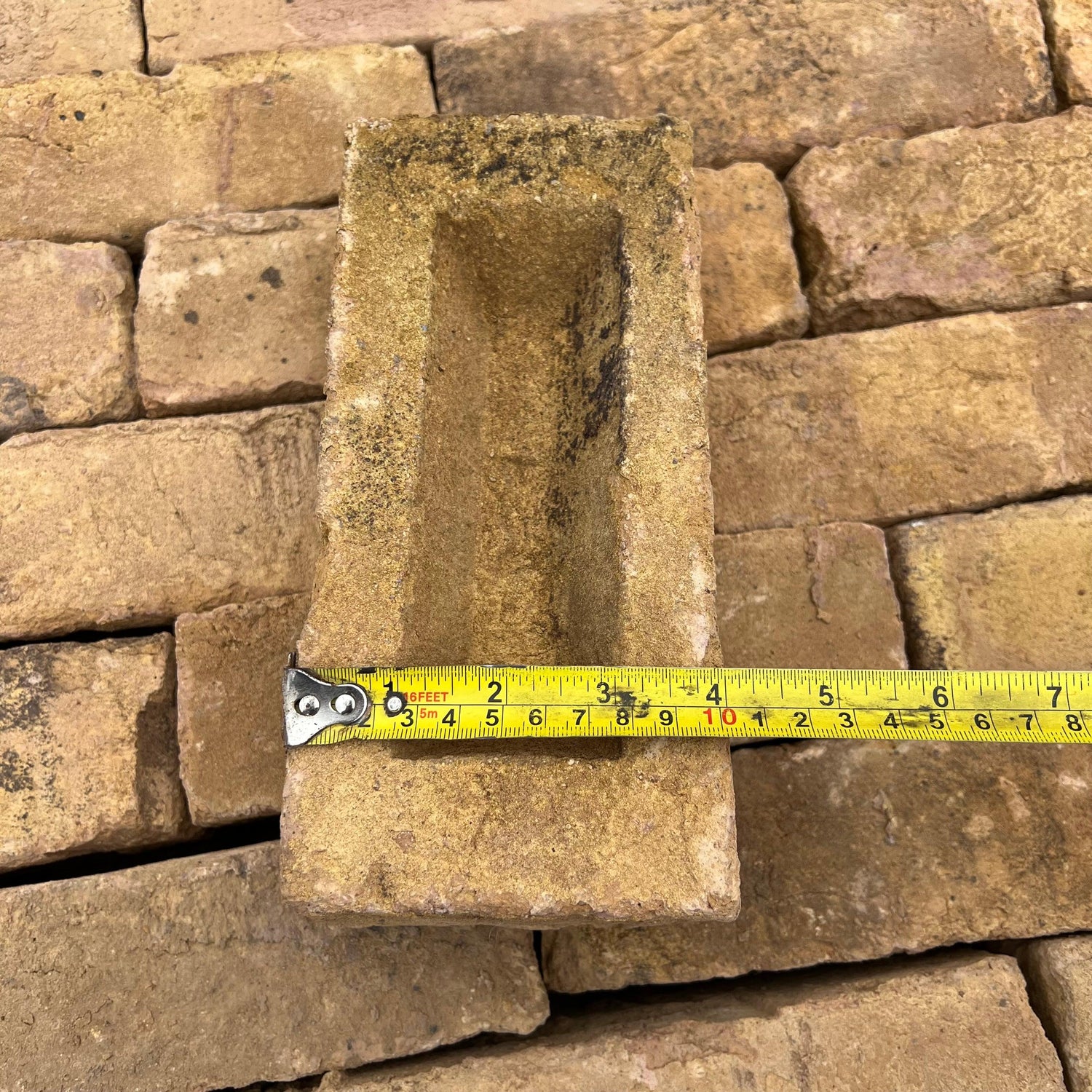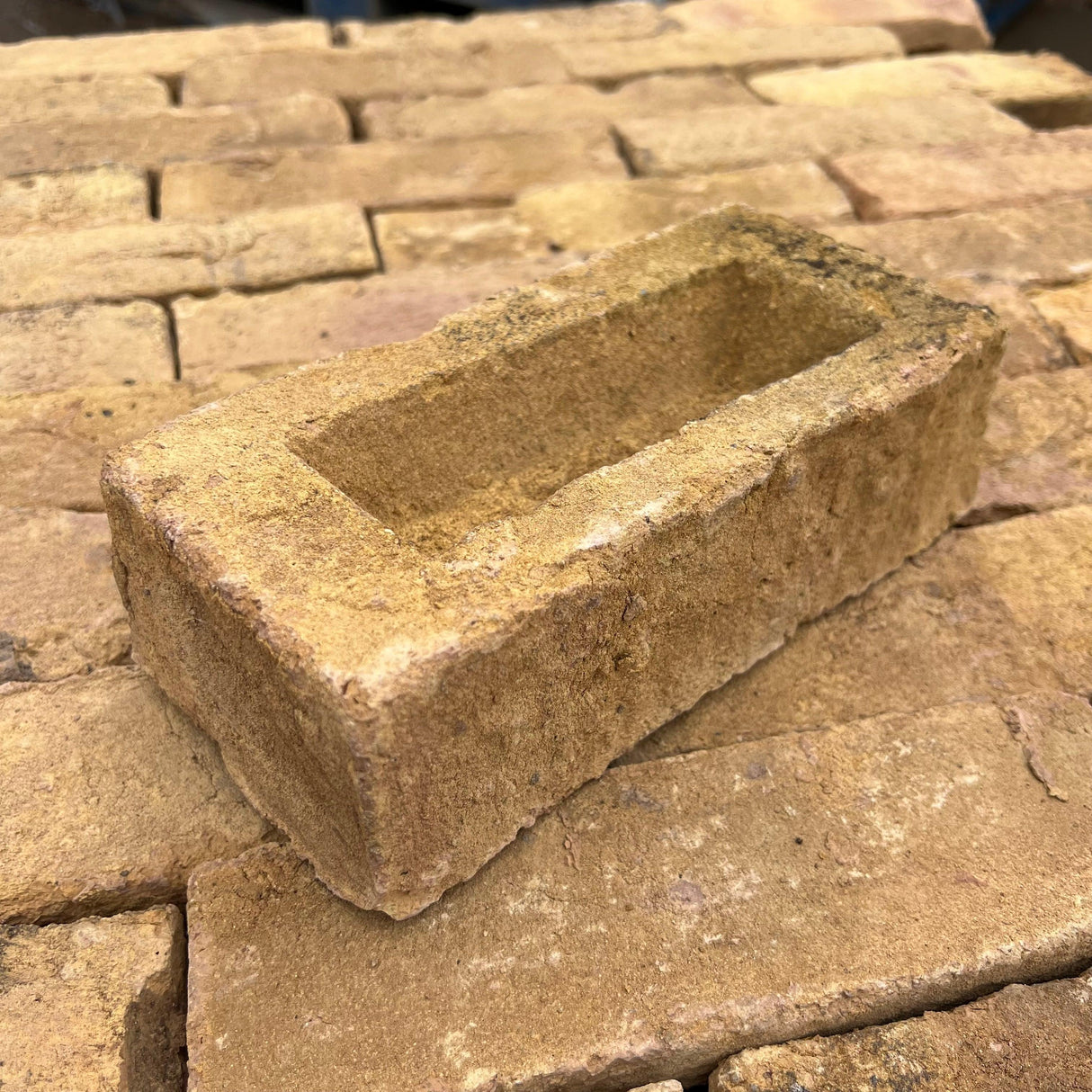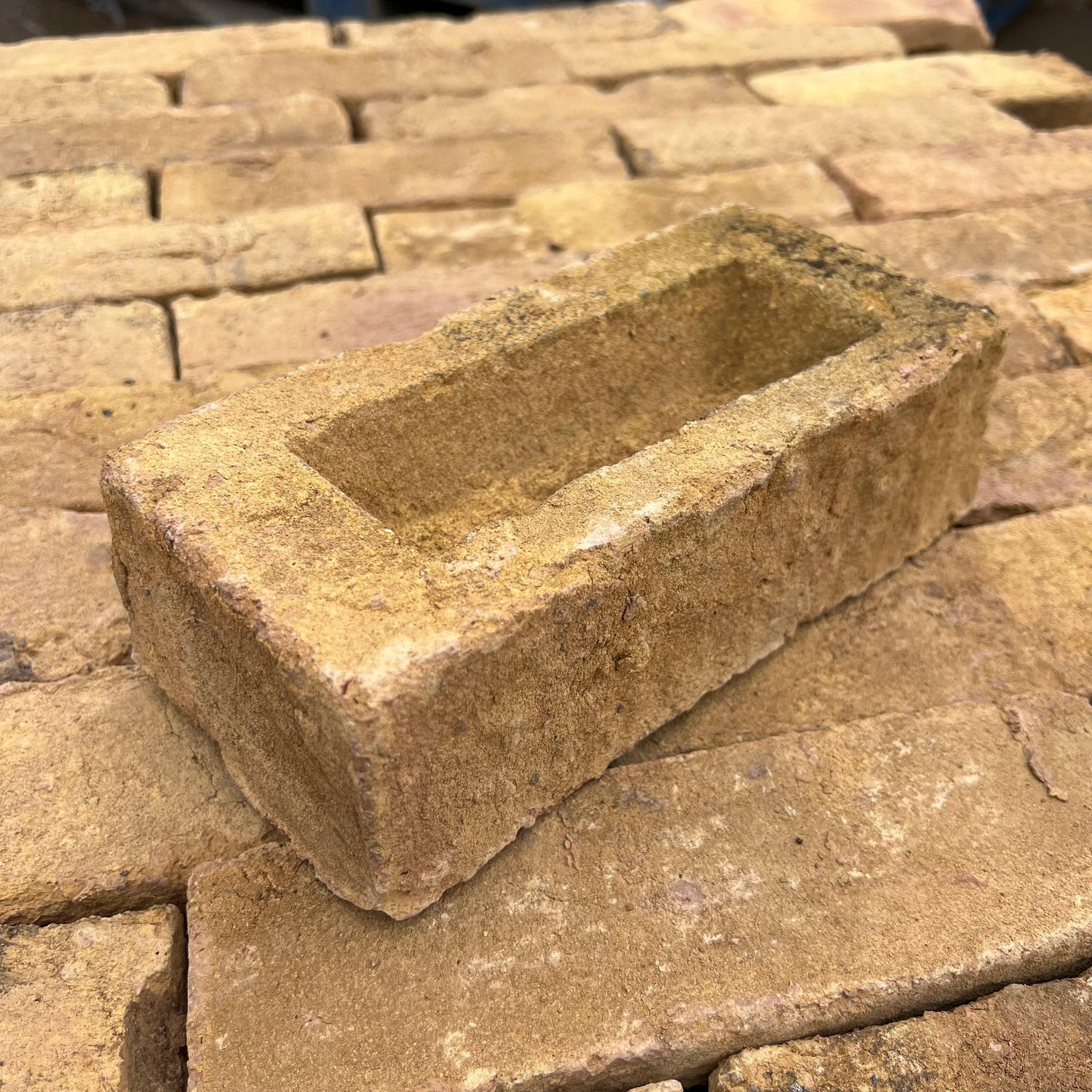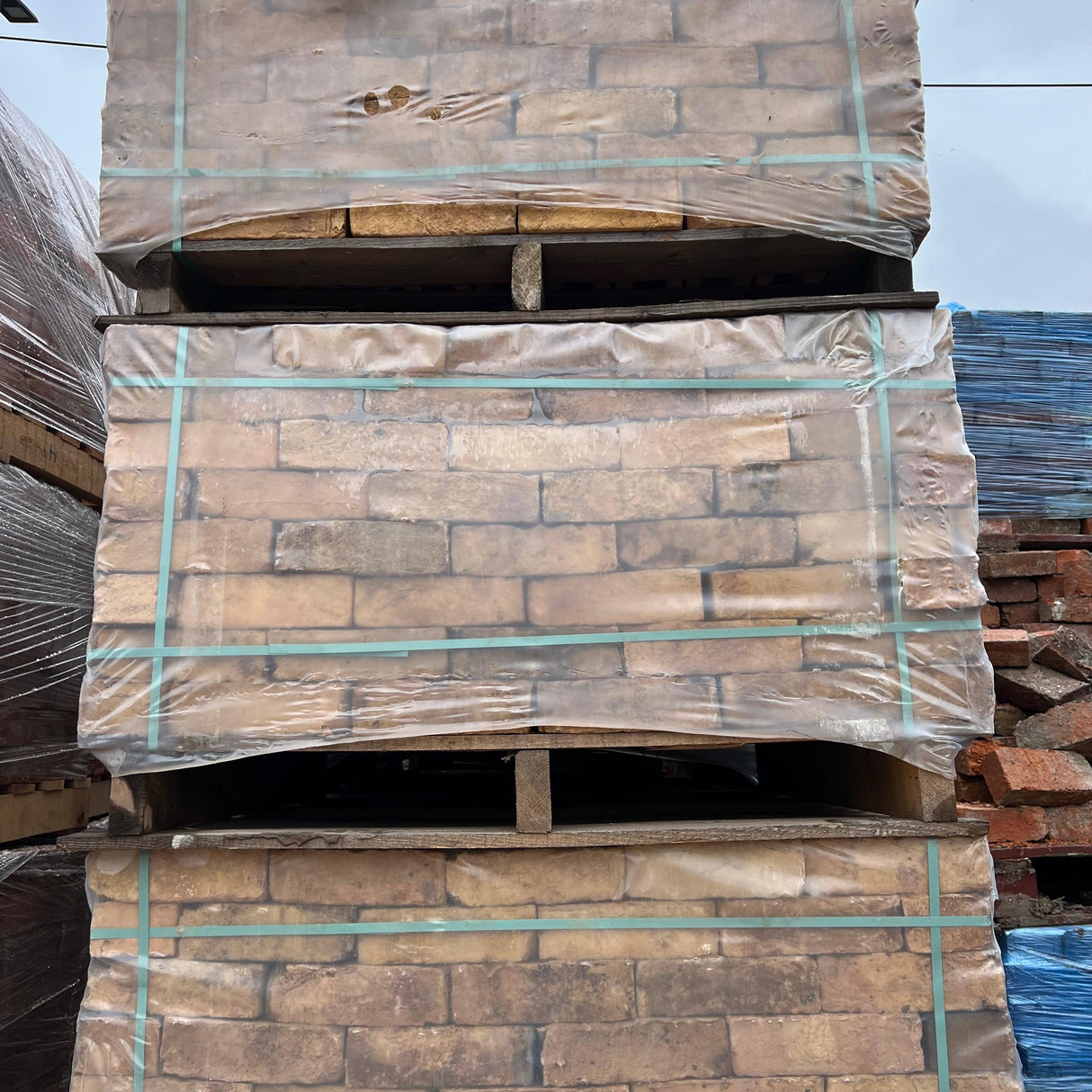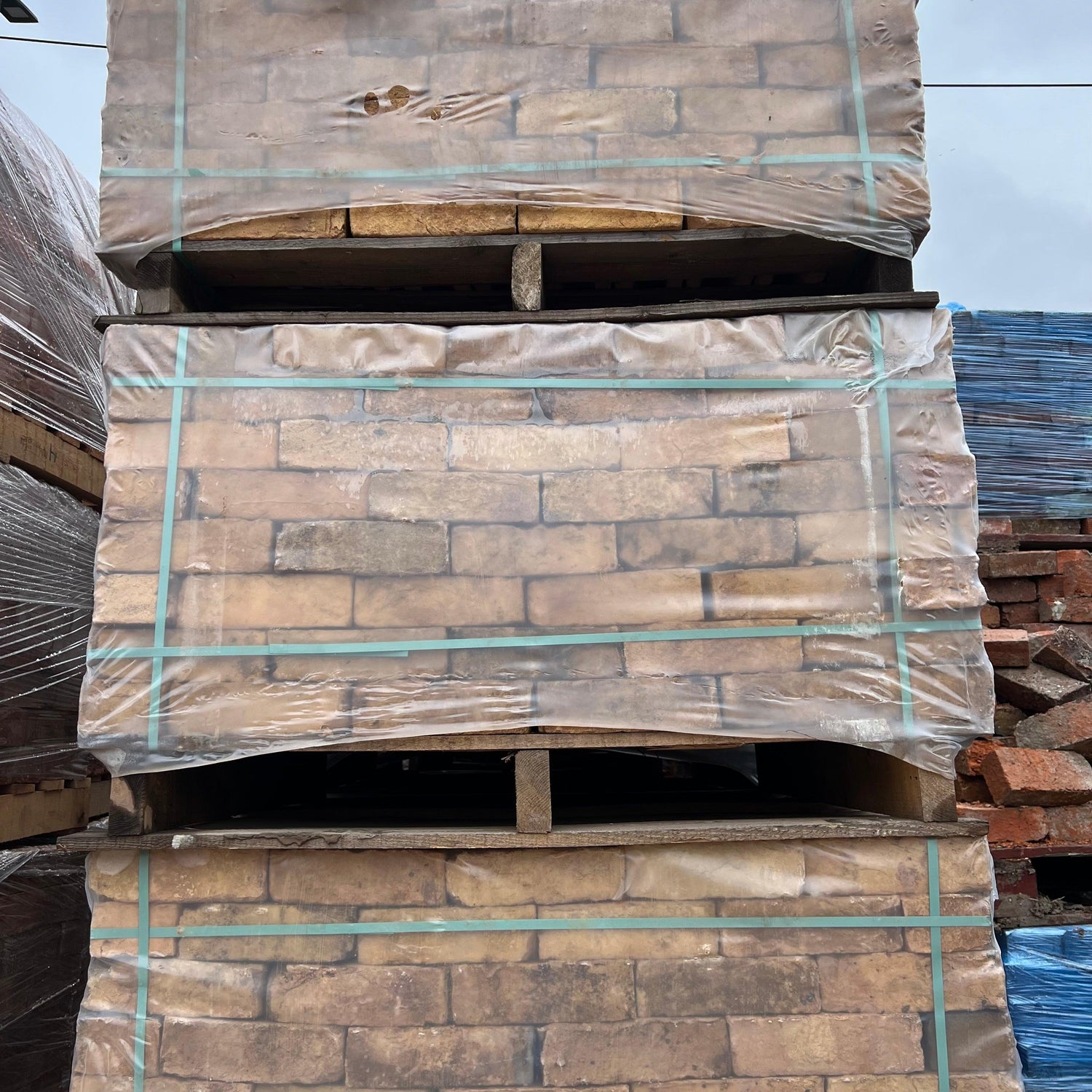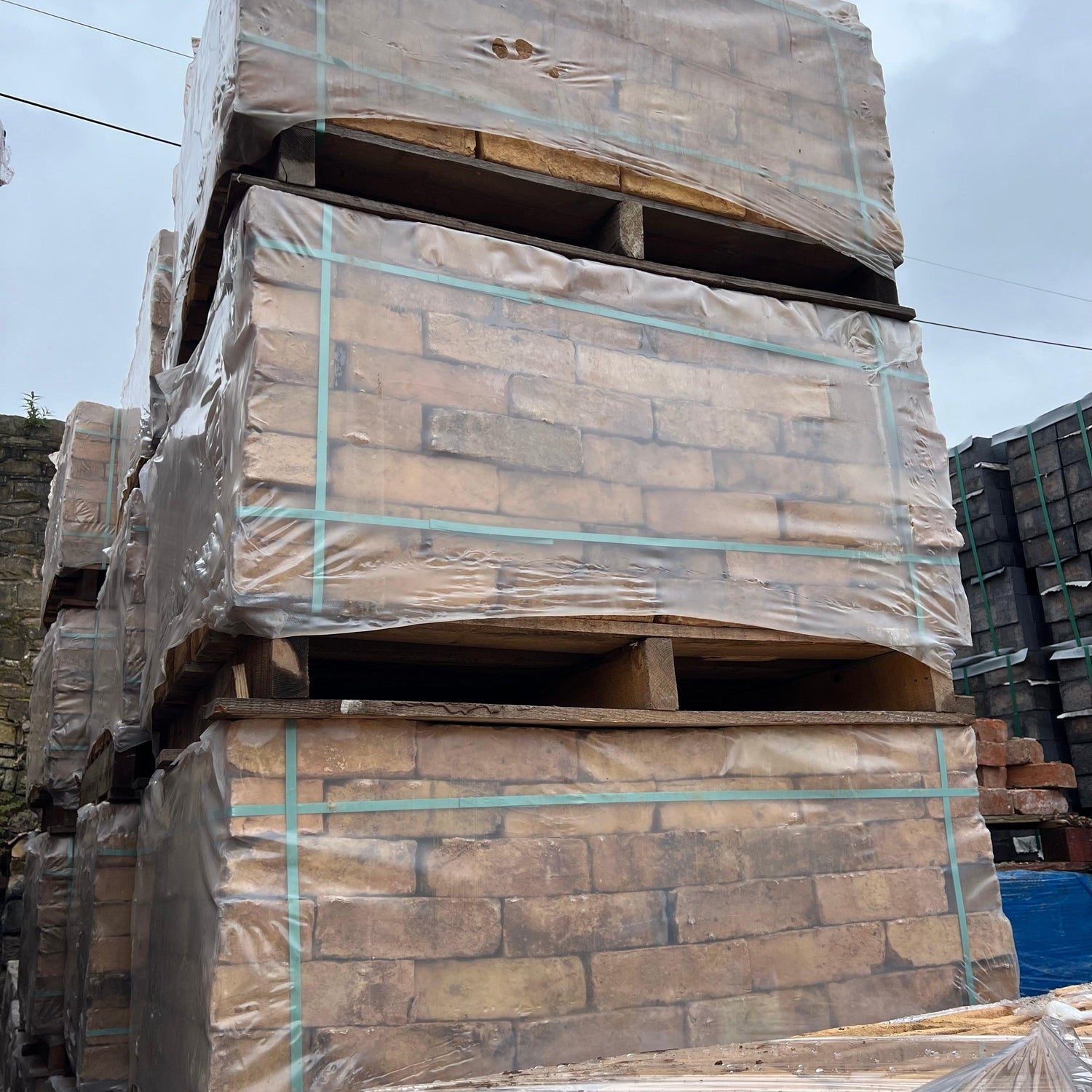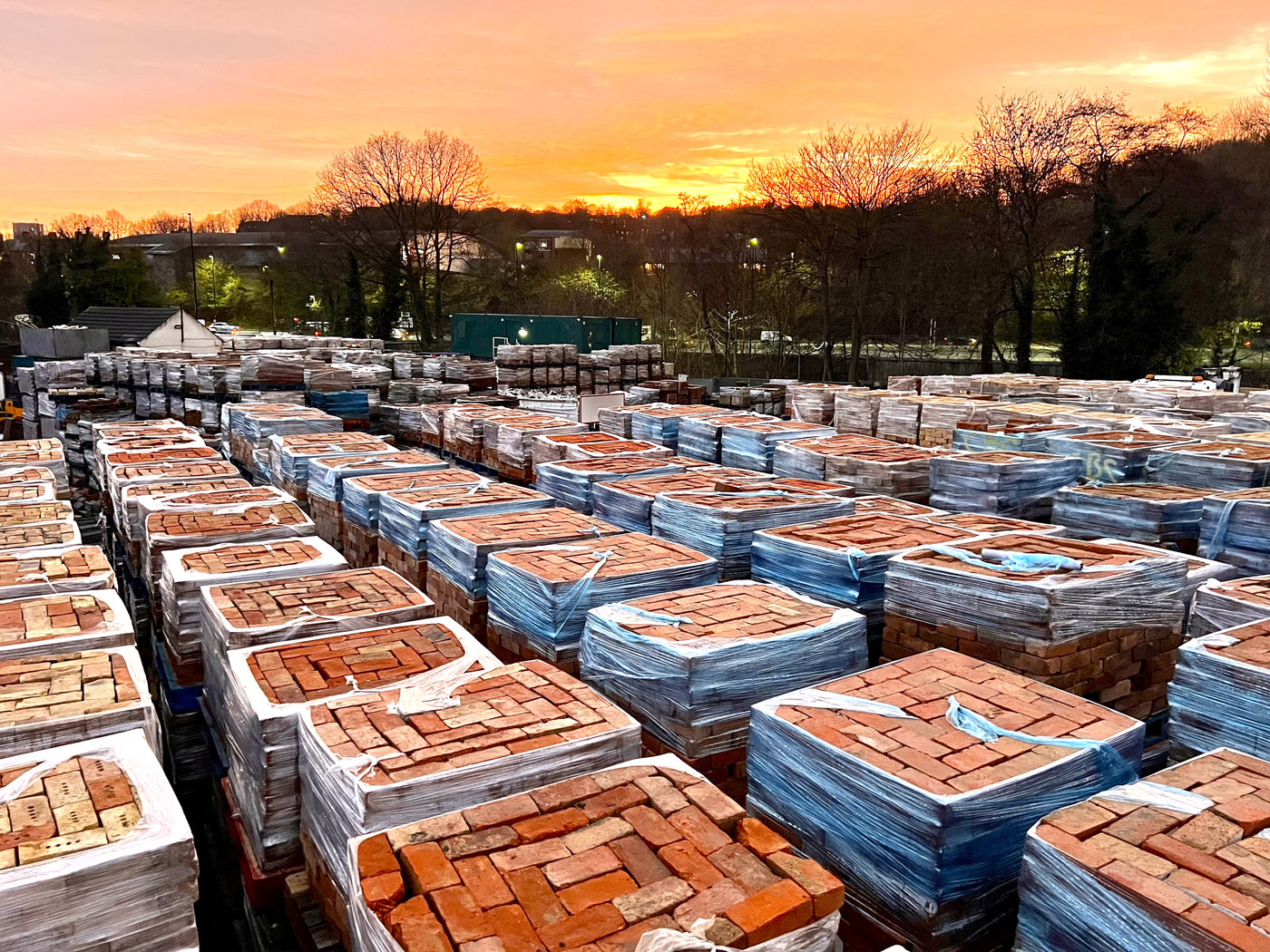London Yellow Stock Bricks
Looking for high-quality bricks for your building project in London?
Reclaimed London Yellow Stock Bricks are high quality imperial yellow handmade bricks ideal for building projects in London and the surrounding counties.
These bricks are genuinely handmade, with subtle characterful overburns which mimic the old yellow stock bricks traditionally seen throughout London.
Shop below both Reclaimed Traditional London Bricks and Reproduction New London Bricks.
CLICK HERE FOR OTHER REGIONAL BRICKS
Original London Yellow Stock Brick | Pack of 400 Bricks | Free Delivery is backordered and will ship as soon as it is back in stock.
About Imperial London Yellow Stock Bricks
London's yellow stone bricks, often referred to as "London Stock bricks," are a distinctive and iconic element of the city's architectural heritage. These bricks have been a staple in London's construction since the 17th century, providing a unique aesthetic that is synonymous with the city's historic streetscapes. Made from the London Clay, which is abundant in the Southeast of England, these bricks are known for their warm, yellow hue, varying from light creams to rich mustards. This variation in color is a result of the differing firing temperatures and the natural variation in the clay composition.
The production of these yellow stone bricks was largely influenced by the Great Fire of London in 1666. Following the fire, there was a significant need to rebuild the city, and brick became the material of choice due to its fire-resistant qualities. The London Building Act of 1667 mandated the use of bricks in all new construction, leading to a boom in the brick-making industry. This period saw the rise of the distinctive yellow London Stock bricks, which were not only functional but also aesthetically pleasing, adding a warm and inviting look to the city's architecture.
Architecturally, the London yellow stone bricks have played a pivotal role in defining the character of various neighbourhoods. Areas like Islington, parts of Kensington and Chelsea, and much of East London showcase terraced houses and public buildings constructed using these bricks. The yellow hue contrasts beautifully with the green of London's parks and gardens, creating picturesque urban landscapes. Additionally, many of the city's iconic Victorian and Georgian buildings are built with these bricks, making them a key element in London’s historical narrative.
In modern times, the demand for London Stock bricks has seen a resurgence, particularly in restoration and conservation projects. Conservationists and architects often seek to preserve the historical integrity of London's older buildings by using materials that are as close as possible to the original. This has led to a renewed interest in traditional brick-making techniques, ensuring that new bricks blend seamlessly with the old. In new construction, these bricks are also used to echo the traditional London aesthetic, providing a link between the city's rich past and its contemporary urban development.
Despite their historical and aesthetic significance, the production and use of London's yellow stone bricks also raise important environmental considerations. The process of brick-making is energy-intensive and contributes to carbon emissions. As a result, there has been a growing interest in sustainable practices within the industry, such as recycling old bricks and developing more energy-efficient kiln technologies. This shift towards sustainability ensures that London's yellow stone bricks continue to be a symbol of the city's architectural heritage while adapting to the modern ethos of environmental consciousness.

